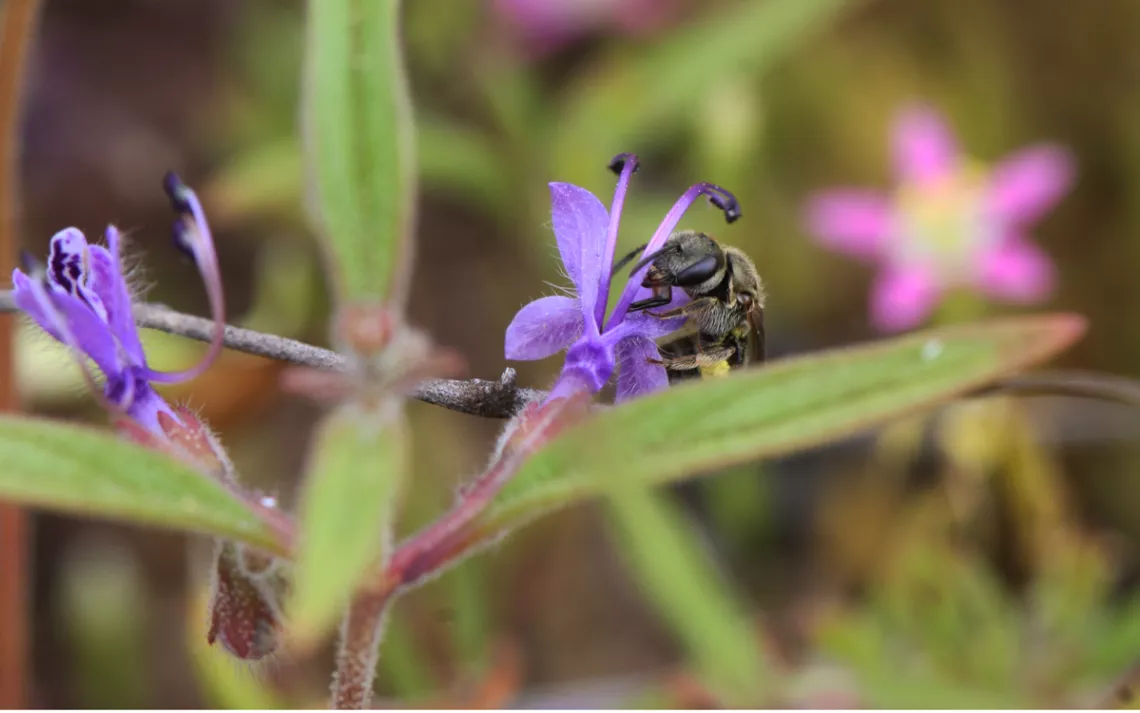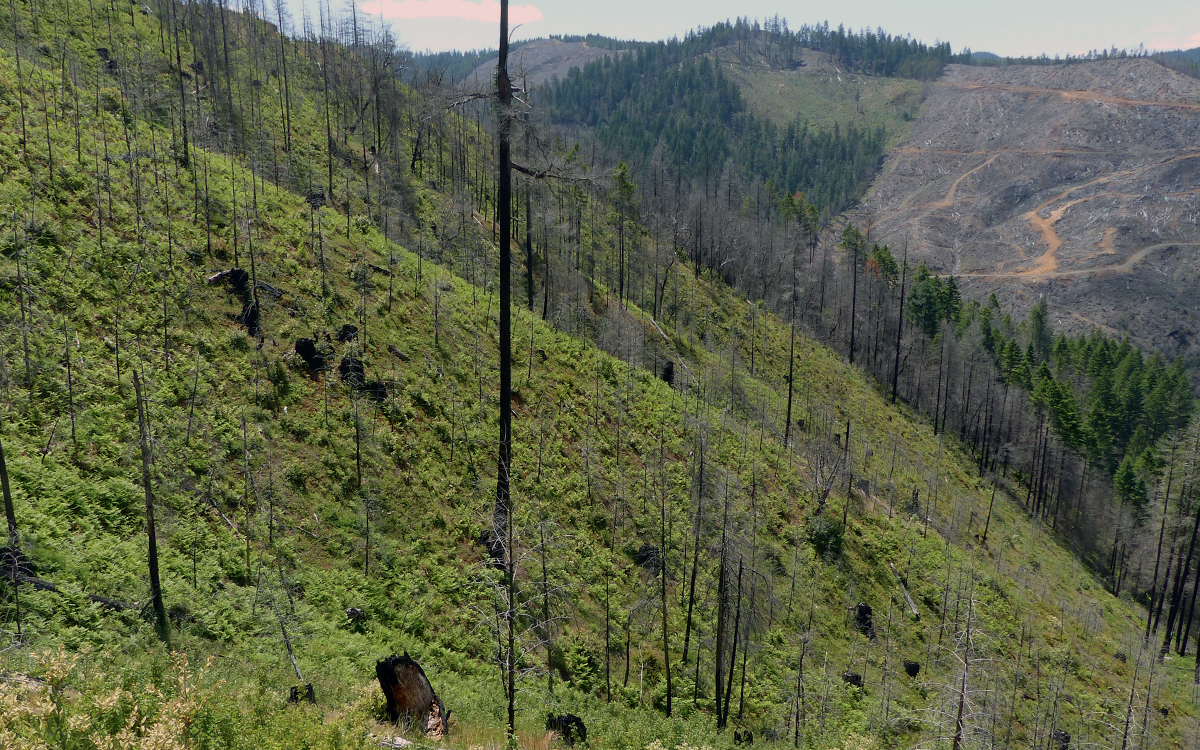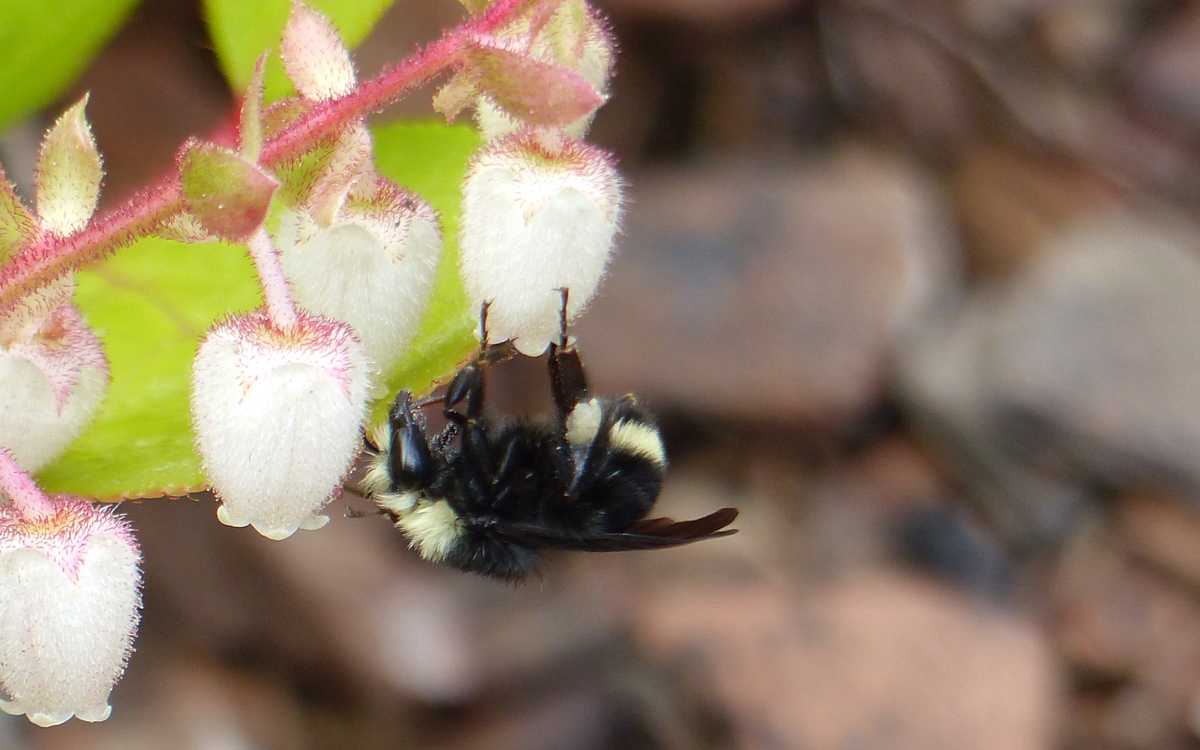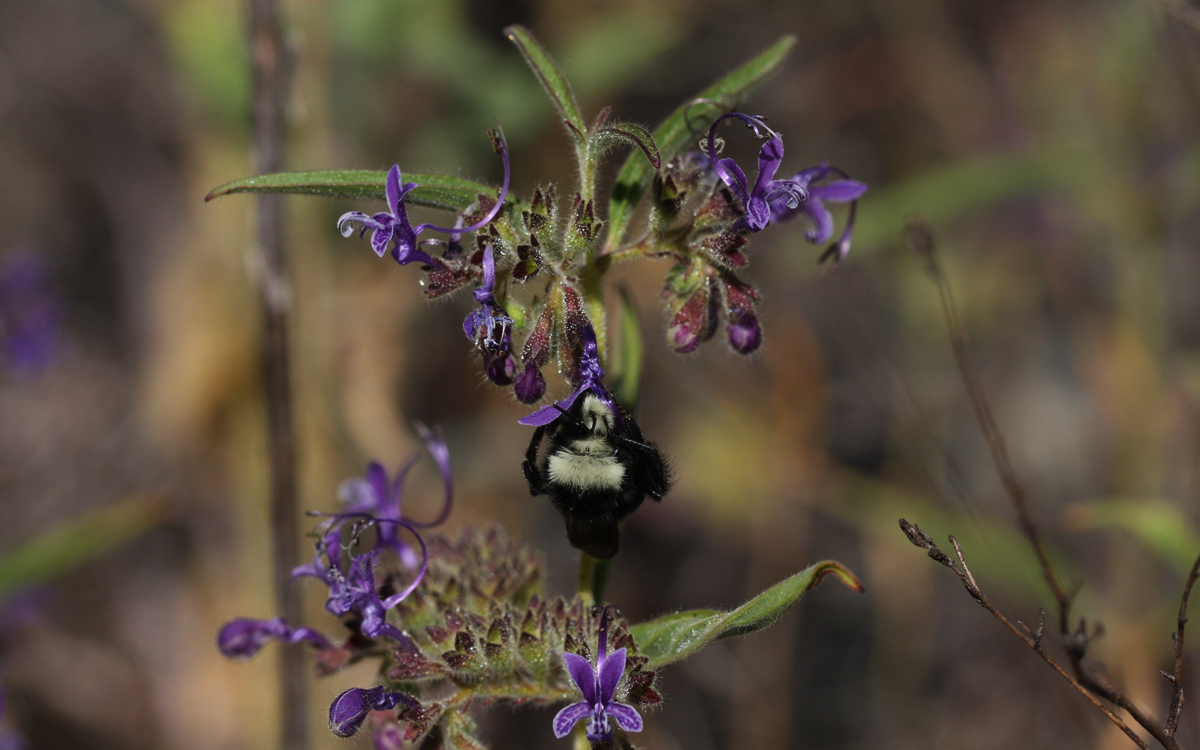Could Wildfires Benefit Bees?
Research shows that fires could fan the flames of pollinator conservation

Native bee visiting Trichostema plants postfire | Photo courtesy of Eric LoPresti
Jim Rivers went into the burned forest looking for bees. As an assistant professor at Oregon State University, specializing in forest ecology, Rivers knew that forests regenerating after a disturbance like a fire, windstorm, or logging often saw a rise in pollinators like bees. But he also knew that bees were in trouble. More than half of native bee species in the US had declined severely in number since 2005. Habitat loss, invasive species, pesticide use, and climate change had all been implicated in that decline, and nearly 25 percent of native bee species were at risk of extinction.

Forest after the Douglas Complex Fire in 2016 | Photo courtesy of Jim Rivers
The forest looked like a checkerboard. Some areas were burned down to the soil. Other areas looked as though no fire had passed through at all. But a closer look revealed that the scorched areas had indeed become pollinator habitat. Native bees were most abundant in spots where the fires had been the most severe—those areas had both a greater variety of bee species and more bees overall.
When vegetation burns, it leaves openings in the soil for ground-nesting bees. Areas where trees blocked out the sun become habitat for wildflowers, whose nectar and pollen are a critical food source. “When we have a forest fire that goes through and opens up the canopies,” said Rivers, "we have more resources for bees.”

Bombus vosnesenskii, a.k.a. the yellow-faced bumblebee, visiting a wildflower | Photo courtesy of Jim Rivers
Wildfires don’t just create habitat for wildflowers—they also seem to boost their numbers significantly. “Before the fire, an average plant would have two or four flowers on it at a time,” says Eric LoPresti, a post-doctoral researcher at Michigan State University, who saw a species of native mint, Trichostema laxum, flourish after the Rocky Fire and the Jerusalem Fire burned more than 94,000 acres in Northern California. “After the fire, we’d find plants with 250 to 300 flowers on them.” LoPresti recalls. “Across the season, a plant that used to have 20 flowers might have 10,000 flowers.” The wildflowers also bloomed for longer—plants that used to stop blooming in September continued producing flowers into November in the seasons immediately after a fire.
In the short term, the relative abundance of nectar- and pollen-producing plants following wildfires are a boon to local bee populations. But the boost they provide is brief. As the forest canopy and understory returns to the wildfire site, they become less suitable pollinator habitat.
In California, three years after LoPresti began collecting data, he saw the differences in pollinator numbers in burned and unburned zones begin to narrow. In part, this was because the native bees were helping the forests recover. By pollinating wildflowers and other fast-growing plants, they were helping those plants spread. As the wildflowers grew, they fixed nitrogen into the soil, creating conditions that helped larger shrubs and trees rebound.
Which means that, in the future, prescribed burns could become an important tactic for pollinator conservation. Research published in the journal Forest Ecology and Management noted that decades of prioritizing reforestation and fire prevention could be added to the many other factors that have contributed to pollinator decline. Using managed burns to thin tree stands and open up tree canopies could provide long-term, stable habitat on public lands for native bees and other pollinator species.

Native bee visiting Trichostema plants postfire | Photo courtesy of Eric LoPresti
For this practice to be effective, says the Pollinator Partnership, a nonprofit organization dedicated to promoting pollinator health, forest managers should try to minimize burns in spring, when there is an abundance of larvae and eggs. The partnership also recommends burning small areas, not entire habitats, with particular focus on clearing south-facing slopes that are most frequently used by ground-nesting bees.
At the same time pollinator populations are plummeting, the number of wildfires is increasing. Climate change has lengthened the fire season and led to more intense burns. In 2018, wildfires burned 8.6 million acres nationwide—almost twice the land area impacted by wildfires five years earlier.
But research suggests that wildfires and bees can form a beneficial feedback loop. If wildfires are managed in ways that ensure they stay small and scattered, there is a good chance that they will be able to help pollinators—which, in turn, will help the forest return.
 The Magazine of The Sierra Club
The Magazine of The Sierra Club



